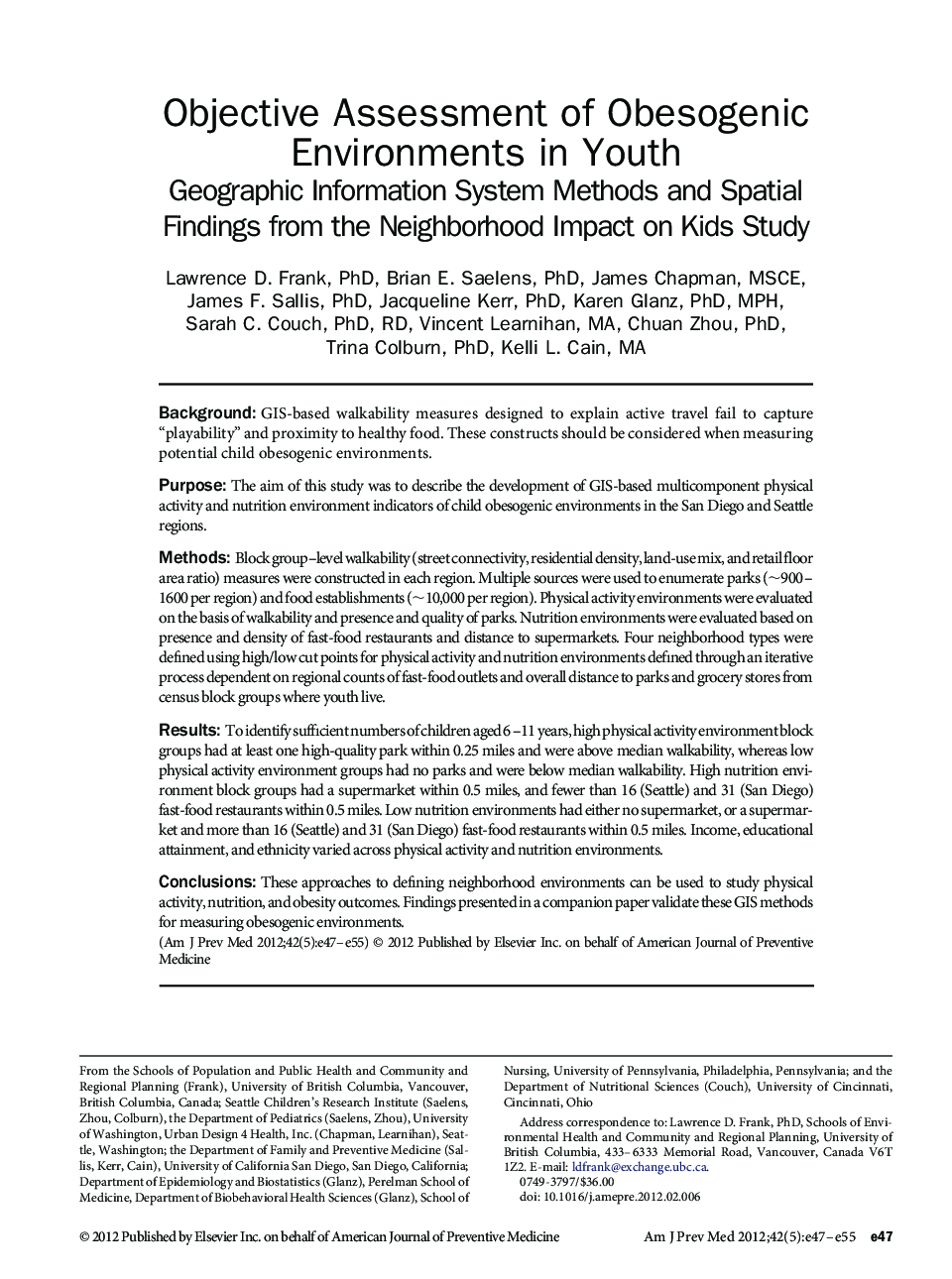| کد مقاله | کد نشریه | سال انتشار | مقاله انگلیسی | نسخه تمام متن |
|---|---|---|---|---|
| 4192562 | 1608692 | 2012 | 9 صفحه PDF | دانلود رایگان |

BackgroundGIS-based walkability measures designed to explain active travel fail to capture “playability” and proximity to healthy food. These constructs should be considered when measuring potential child obesogenic environments.PurposeThe aim of this study was to describe the development of GIS-based multicomponent physical activity and nutrition environment indicators of child obesogenic environments in the San Diego and Seattle regions.MethodsBlock group–level walkability (street connectivity, residential density, land-use mix, and retail floor area ratio) measures were constructed in each region. Multiple sources were used to enumerate parks (∼900–1600 per region) and food establishments (∼10,000 per region). Physical activity environments were evaluated on the basis of walkability and presence and quality of parks. Nutrition environments were evaluated based on presence and density of fast-food restaurants and distance to supermarkets. Four neighborhood types were defined using high/low cut points for physical activity and nutrition environments defined through an iterative process dependent on regional counts of fast-food outlets and overall distance to parks and grocery stores from census block groups where youth live.ResultsTo identify sufficient numbers of children aged 6–11 years, high physical activity environment block groups had at least one high-quality park within 0.25 miles and were above median walkability, whereas low physical activity environment groups had no parks and were below median walkability. High nutrition environment block groups had a supermarket within 0.5 miles, and fewer than 16 (Seattle) and 31 (San Diego) fast-food restaurants within 0.5 miles. Low nutrition environments had either no supermarket, or a supermarket and more than 16 (Seattle) and 31 (San Diego) fast-food restaurants within 0.5 miles. Income, educational attainment, and ethnicity varied across physical activity and nutrition environments.ConclusionsThese approaches to defining neighborhood environments can be used to study physical activity, nutrition, and obesity outcomes. Findings presented in a companion paper validate these GIS methods for measuring obesogenic environments.
Journal: American Journal of Preventive Medicine - Volume 42, Issue 5, May 2012, Pages e47–e55